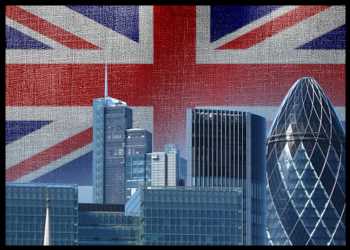The UK economy logged weak growth in July as the output remained flat in services, and contracted further in construction on supply shortages, data from the Office for National Statistics showed on Friday.
Gross domestic product expanded 0.1 percent in July from June, when the economy grew 1 percent. This was also slower than the 0.6 percent growth economists had forecast.
Although the economy expanded for the sixth consecutive month, output remained 2.1 percent below its pre-coronavirus pandemic level.
In three months to July, GDP grew 3.6 percent, largely because of the performance of the services sector. However, the expansion was also weaker than the expected rate of 3.8 percent.
After many months during which the economy grew strongly, making up much of the lost ground from the pandemic, there was little growth overall in July, Jonathan Athow, ONS’s deputy national statistician for economic statistics, said.
The rise in COVID-19 cases and the product/labor shortages are probably behind the stalling in the UK’s economic recovery in July, Paul Dales, an economist at Capital Economics, said. But the bulk of the drag on activity from product and labor shortages will prove to be temporary.
With next week’s CPI release set to reveal a jump in inflation from 2.0 percent to around 3.1 percent, there is a whiff of stagflation in the air, the economist added.
On the production-side, services output remained broadly flat in July after rising 1.5 percent in June.
Industrial output rose 1.2 percent in July and was the main contributor to GDP growth, boosted by the reopening of an oil field production site. Mining output surged 21.9 percent, while manufacturing output remained flat versus June’s 0.2 percent rise.
Construction contracted for a fourth consecutive month, with output down by 1.6 percent.
On a yearly basis, industrial production was up 3.8 percent in July, but weaker than June’s 8.3 percent rise. Likewise, the increase in manufacturing output eased to 6 percent from 13.9 percent.
Another report from the ONS showed that the visible trade gap widened to GBP 12.7 billion in July from GBP 11.98 billion in the prior month. The expected level was -GBP 11 billion.
Exports of goods declined 1 percent on month, while imports were up 1.1 percent.
The surplus on services trade rose to GBP 9.58 billion from GBP 9.47 billion. The total trade deficit increased to GBP 3.12 billion from GBP 2.51 billion in June.
Source: Read Full Article
